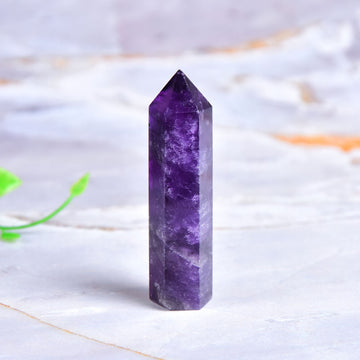Eye problems are on the rise; the National Eye Institute estimates that, between 2010 and 2050, the estimated number of people affected by the most common eye diseases will double.
Causes of Weak Eyesight
Weak eyesight is generally associated with focusing difficulties (myopia, hypermetropia, astigmatism), vision obstruction (cataract), damage to the optical nerve (glaucoma), retinal damage, macular degeneration and other conditions (dry eyes, watery eyes). Aging and excessive strain tend to be the major culprits. Medical conditions like diabetes or eye infections can further accentuate the problem. Genetics also plays a role.
Ayurvedic Doshas and Eye Sight
Ayurveda places great importance to eye care, deeming the eye as the most important among all the sense organs and most easily afflicted by the imbalance of basic body humors (doshas) which results in its decreased/disturbed function. All procedures which balance the Doshas (somatic and psychological) are important for the treatment of eye. Ayurveda also provides a specific class of medicines and procedures called Chakshushya rasayana for targeted action on the eye and visual apparatus.
To understand the Ayurvedic view of eye disorders, it is important to understand the Doshas and how they impact the eye.
Pitta Dosha
The Pitta Dosha controls all transformation processes in the body. Different types of Pitta are associated with various processes e.g. digestion, blood cell formation, vision – there is even a Pitta for processing, storing and assimilation of information.
Eye disorders related to degeneration of any part of the eye apparatus are opined to be a result of Pitta Dosha disorder.
- Imbalance in Pachaka Pitta (digestion) impacts Ranjaka Pitta (blood quality) which in turn impacts supply of nutrition to the eye.
- Imbalance in Alochaka Pitta (the vision Pitta) impacts photochemical operations and retinal function.
- Imbalance in the Sadhaka Pitta (information assimilation) causes problems in processing of images in the brain.
Too much Pitta causes stress and damage. Too little Pitta results in deficiency in function. The Pitta view of Ayurveda ties in closely with the modern view of oxidation and inflammation being key reasons for weakening of eye sight.
Vata Dosha
The Vata Dosha governs movement and circulation of essential elements (food, water, blood, oxygen, urine, enzymes and even neural impulses) throughout the body.
Imbalance in Vata Dosha can manifest as blood circulation problems (impacting nutrition reaching the eye), problems with circulation and replacement of aqueous humor (to keep the eye moist and clean and to keep the eye muscles supple), dryness of the eye or problems in transporting signals to the brain.
Kapha Dosha
The Kapha Dosha represents the elements that physically make up the body i.e. bones, flesh, blood, muscles, tissues, nerves, bodily fluids, mucus etc.
In the context of the eye, Kapha Dosha governs all the physical parts of the eye apparatus as well as vitreous and aqueous humor that lubricates the eye. Excessive Kapha tends to accumulate and cause blockages e.g. accumulation of mucus in the sinus cavities can cause strain on the eyes. Inadequate Kapha can manifest in the form of weak muscles or dryness.
Vata, Pitta and Kapha are also inter-related in their action. Inadequate Pitta may cause excess in Kapha and vice versa. Imbalance in Vata can cause Kapha accumulation or disturb Pitta action. Balance of these Doshas is the key to a healthy body, including eyes.
Ayurveda Recommendations for Eye Care
Depending on the nature of the problem, Ayurveda recommends a specialized combination of diet, medicines and procedures to vitiate any imbalance in the Doshas that might be responsible.
At the same time, Ayurveda provides some generic recommendations as well that are applicable independent of the specific Dosha disorder [1]:
What To Avoid
- Excessive intake of spicy and salty food
- Excessive fluid intake
- Eating at night
- Sudden temperature variations e.g. diving into water on a hot day
- Excessive gazing at objects
- Sleeping during the day, staying awake at night
- Excessive weeping
- Suppression of natural urges
- Sleeping with the head either too high or too low as compared to rest of the body
- Excessive anger or grief
Procedures for Eye Care
- Foot massage, especially between the first and second toes, centre of the sole, heel and outer margins, behind both sides of the ankle - stimulates all the chakras
- Cold water application and gentle immersion of eyes in cold water hydrates the eye and relieves strain on eye muscles
- Splashing cold water into eyes while holding some water in your mouth hydrates the eye, improves blood circulation and relieves strain on eye muscles
- Palming (mildly rubbing and massaging your eyes with your palm and fingers) improves blood circulation
- Nasal drops (mildly salty warm water or herbal aqueous solution) helps dissolve mucus and relieve strain on eye muscles
Diet
As per Ayurveda, including the following items in your diet can be beneficial for eyesight:
Vegetables and Herbs: Asparagus,Barley, Green Gram, Sponge Gourd, Brinjal, Amalaki (Indian gooseberry), Spiny Gourd, Bitter Gourd, Drumstick, Carrot, Pumpkin, Raw banana, Radish, Coriander, Curry Leaf, Turmeric, Kair fruit, Acanthus, Meshasringi (Gymnema), Hogweed, Jeevanti
Fruits: Mango, Orange, Guava, Papaya, Apple, Pomegranate
Dairy Products and Oils: Milk, Ghee, Mustard Oil, Sesame Oil, Coconut Oil
It must be noted that recommended diet mostly includes items rich in Vitamins A and C, and have anti-oxidant and anti-inflammatory properties.
Medicines
Triphala is recommended as the medicine par excellence for maintaining good eye sight (and for longevity and health in general) [2]. Triphala is a combination of 3 fruits Amalaki (Indian goosebery), Bibhitaki and Haritaki.
Depending on the type of Dosha imbalance, Triphala can be mixed with ghee, oil or honey for the most beneficial effect.
External/Topical use of Triphala for eye care:
- Netra Prakshalana Ocular wash/Splashing with Triphala aqueous solution.
- Netra Seka Therapeutic Ocular irrigation in closed eyes from a height of 7-8 cm.
- Aschyotana Instilling medication in drop form a height of 3-4 cm. This method is most highly recommended by Ayurvedic scholars.
- Vidalaka and Pindi Medicated application over closed eyes in paste as well as poultice form.
- Anjana Application of medicine in conjunctival sac.
- Tarpana Satiating eye with ghee by retaining it on eye ball and blinking continuously for a stipulated period.
- Putapaka Pouring and withholding various form of medicated extracts prepared by specific pharmaceutical process called putpaka in open eyes followed by blinking continuously for a stipulated period.
Preclinical studies have shown that Triphala is a potent free radical scavenger and possesses antioxidant, anti-inflammatory, antipyretic, analgesic, antibacterial, antimutagenic, adaptogenic, anticancer, and hypoglycemic effects. Recent studies have confirmed that Triphala is beneficial for multiple eye problems such as dry eye [3] and Computer Vision syndrome [4].
References
- Sharma, Priyanka, P. K. Sharma, and Mangalagowri V. Rao. Eye Care Through Swathavritta and Yoga. Punarna, MONTH 2.2 (2014).
- Gopinathan, G., and K. S. Dhiman. Triphala in Eye Diseases: A Critical Review. J Homeop Ayurv Med 2.123 (2013): 2167-1206.
- Moharana, Haramohan, Pradipkumar Panda, and Laxmi Maharana. Role of Netra Tarpana with Triphala Ghrita in Dry Eye: A Clinico-Pathological Evaluation.†Journal of AYUSH:-Ayurveda, Yoga, Unani, Siddha and Homeopathy 4.3 (2015): 1-8.
- Gangamma, M. P., and Manjusha Rajagopala. A clinical study on Computer vision syndrome and its management with Triphala eye drops and Saptamrita Lauha AYU (An international quarterly journal of research in Ayurveda) 31.2 (2010): 236.



































